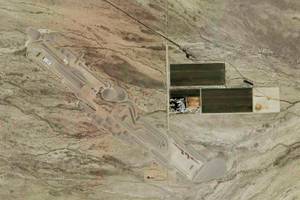There’s this idea that in a century (or several), visitors to Nevada will walk Michael Heizer’s epic artwork, “City,” a massive, four-decade undertaking composed of minimalist structures in Lincoln County. The conversation will turn to the 21st-century foresight to save the work as it was meant to be experienced—isolated in the desert; a marvel of engineering, concept and perseverance; modern, with references to ancient temples, industry and contemporary urban infrastructure.
That’s only if Las Vegas doesn’t blow it, or more specifically, doesn’t “f*ck it up,” says art and culture critic Dave Hickey, who joined Michael Govan, director of the Los Angeles County Museum of Art last week, to discuss the near-complete work for which advocates are seeking national monument designation.
Lauded by Govan as one of the greatest artworks of our time, the importance of “City” extends beyond art history to history in general, he says, echoing Hickey’s assertion that its complexities and simplicities allow for longevity. Brought to the Smith Center by the Contemporary Arts Center, the two traded Heizer stories and championed the artistic merits of “City,” while discussing art and culture’s tendency to hold the information and intelligence of civilizations.
Built to last millennia, “City” sits within the Basin and Range, a vast patch of Nevada that Sen. Harry Reid has been trying through legislation to conserve. Groups such as the Conservation Lands Foundation are working to see it protected under the Antiquities Act.
Heizer selected the area for its geology, remoteness and feeling of expansive space. “In the ’70s he wanted to find a space that would be protected—a ranch surrounded by BLM land. In those days no one could touch BLM land,” Govan says, contrasting the idea with the more recent threat of nearby potential fracking and rail lines hauling nuclear waste (and in the 1980s, MX missiles). Encouraging residents to send letters to elected officials, Govan referred to the land as “ours as citizens of the United States.”
Of “City,” Hickey said, “What could be more American, what could be more interstellar? I really cannot find any objection or any reservation about this work of art. It is not monumental, it’s sinuous. It’s big as hell and it’s sitting here right on the edge of all our lives.”








